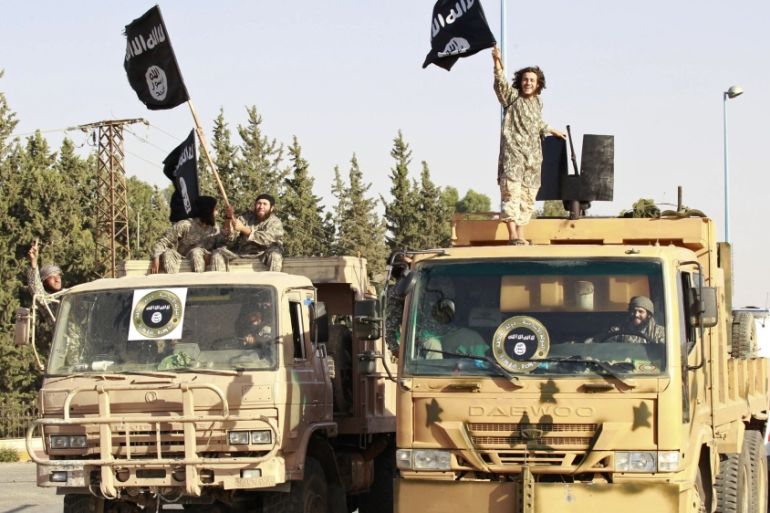ISIL announces death of its leader
A spokesman for the armed group said its leader Abu Hasan al-Hashimi al-Qurashi, was killed ‘in combat’.

The ISIL (ISIS) armed group has announced that its leader Abu Hasan al-Hashimi al-Qurashi has been killed in battle.
A spokesman for the group said on Wednesday that Abu Hasan al-Hashimi al-Qurashi, an Iraqi, died “in combat”, without elaborating on the date or circumstances of his death. The spokesman, Abu Omar al-Muhajer, named its new leader as Abu al-Hussein al-Husseini al-Qurashi.
Keep reading
list of 4 itemsUN expert decries ‘systematic’ attacks on Afghan Shia groups
‘Rampant violence’ in Syrian camp for ISIL-linked detainees: MSF
France says it has captured Islamic State bigwig in Mali
The United States military’s CENTCOM said Abu Hasan al-Hashimi al-Qurashi had been killed in mid-October.
“This operation was conducted by The Free Syrian Army in Dar’a [Deraa] province in Syria. ISIS remains a threat to the region. CENTCOM and our partners remain focused on the enduring defeat of ISIS,” CENTCOM spokesman Colonel Joe Buccino said in a statement.
Syrian fighters involved in the clash told Reuters that Abu Hasan al-Hashimi al-Qurashi had blown himself up after he and his aides were surrounded by local fighters in the town of Jasem.
Quraishi and his aides had been discovered in a secret hideout in a house, said the sources, who included FSA fighters, relatives of comrades who died in the clash and residents of Jasem.
“The leader and a companion blew themselves up with suicide belts after our fighters succeeded in storming their hideout,” said Salem al Horani, a resident of Jasem and former fighter who participated in the siege of the three houses where the ISIL cell was discovered.
Deraa is currently under the control of the Syrian government, after a reconciliation deal in 2018 with opposition forces in the area that allowed them to keep light weapons.
Little had been known about Abu Hasan al-Hashimi al-Qurashi, who took over the group’s leadership following the death of Abu Ibrahim al-Qurashi, his predecessor, in a US raid in February in northwest Syria’s Idlib province.
Al-Qurashi is believed to be a nom de guerre that various ISIL leaders have adopted.
The deaths of successive leaders mark a blow to the armed group, which a US-led coalition said it had defeated in Iraq in 2017 and in Syria two years later. But sleeper cells of the armed group still carry out attacks in both countries.
The ISIL group declared its so-called “caliphate” in 2014 after conquering vast swaths of territory in Iraq and Syria.
A US-led military coalition launched an operation dubbed “Inherent Resolve” in 2014 to get ISIL out of the areas it controlled.
Abu Hasan al-Hashimi al-Qurashi is the second ISIL leader to be killed since founder Abu Bakr al-Baghdadi was killed in Syria’s Idlib by the US in 2019.
The White House welcomed the news of his death, but would not comment on any US involvement in the operation that led to the killing.
“We are pleased to see the removal of ISIS leaders in such quick succession,” White House Press Secretary Karine Jean-Pierre. “The United States remains committed to countering the global threat from ISIS and stands ready to work with international partners.”
Hassan Hassan, author of a book on ISIL, told Reuters that the group was diminished.
“This doesn’t mean the group is finished, but for now it is a shadow of its former self, they are hollowed out in terms of their leadership and their ability to carry out attacks,” he said.
“They don’t have iconic, charismatic leaders any more, and they haven’t carried out any major attacks recently,” he said.
Turkey in September said security forces had arrested Bashar Khattab Ghazal al-Sumaidai, a “senior executive” of ISIL who was also known as Abu Zeyd.
Turkish media said there were some indications Sumaidai might have been the ISIL leader, Abu Hasan al-Hashimi al-Qurashi.